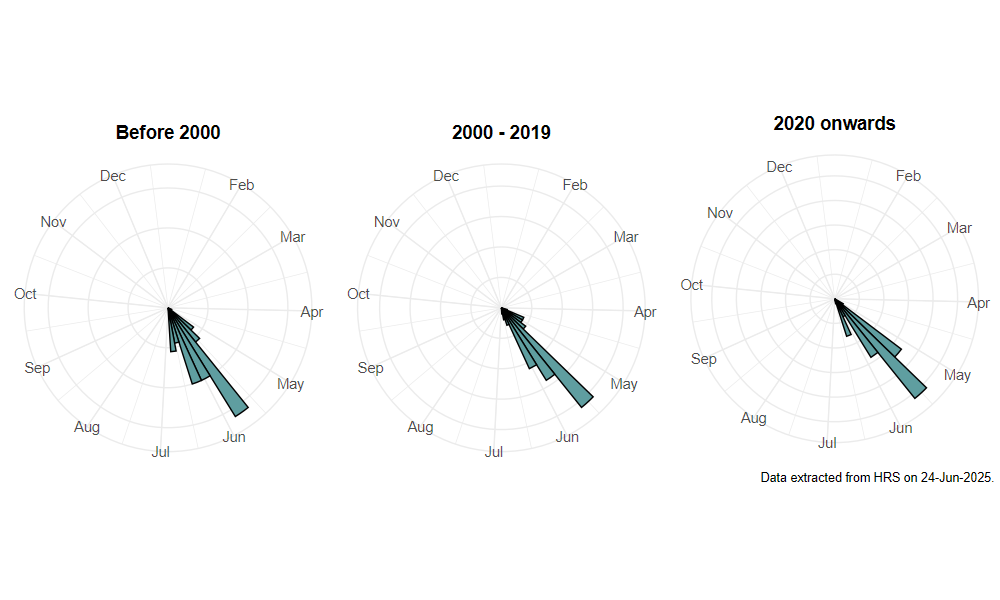Caliprobola speciosa (Rossi, 1790)
Identification
Identification difficulty = 2. ![]()
![]() according to Ball & Morris, 20241
according to Ball & Morris, 20241
Biology
The larva is found in wet decaying roots of Beech Fagus sylvatica trees and stumps which form a wet mushy 'porridge'. Adults are regular flower visitors, but are most frequently encountered investigating the bases of trees and large stumps. Reports from entomologists working rotting timber indicate that adults are readily attracted to the scent of rotting timber. Adults have been taken in some numbers in Malaise traps operated in Windsor Forest.
Flight period
The following plots show the number of unique records per week excluding those reported to be of immature stages.

Status
Lower Risk (Near Threatened) - Ball & Morris, 20142. Endangered (RDB1) - Falk, 19913 & Shirt, 19874.
Distribution
This species is confined to two localities; the New Forest and Windsor Great Park. There is an old record from Staffordshire with very limited data on the Hoverfly Recording Scheme database, reports of occurrence in Derbyshire and South Yorkshire are not supported on the HRS database. There is also a 1990s record of a visual sighting from a locality close to Esher in Surrey, that looks right in terms of habitat.

Trends
The following plots show the Frescalo TFactor vs year and a map of the rescaled frequency (all records) for the species.
-
Ball, S., & Morris, R. (2024). Hoverflies of Britain and Ireland. WILDGuides (3rd ed.). Oxford: Princeton University Press. ↩
-
Ball, S., & Morris, R. (2014). A review of the scarce and threatened flies of Great Britain. Part 6: Syrphidae. ( No. 9). Species status (pp. 1–130). Peterborough: JNCC. ↩
-
Falk, S. (1991). A review of the scarce and threatened flies of Great Britain. ( No. 39). Research and Survey in Nature Conservation (pp. 1–194). Peterborough: NCC. ↩
-
Shirt, D. (Ed.). (1987). Red Data Books: 2. Insects. Peterborough: NCC. ↩